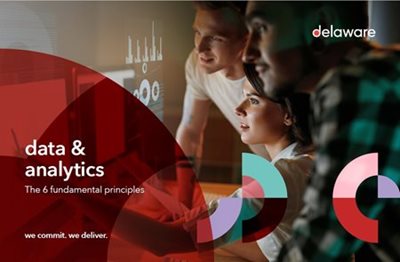
Why data & analytics is 80% about people
- people
- data
Successful data & analytics projects hinge on educating, convincing and inspiring every single employee. Learn more about how to get it right from the outset.

Successful data & analytics projects hinge on educating, convincing and inspiring every single employee. Learn more about how to get it right from the outset.
It is a common misconception that in most data & analytics projects, they mainly involve specialised technical expertise. Organisations should know that no matter how skilled their data team might be, or how well the models and tools work, these investments will eventually go to waste if your employees do not use them to make operational decisions or take actions.
First things first: what exactly is data & analytics? Does it refer to the highly technical process of interpreting of raw data? Not exactly, in reality, it is more complicated than that. The term ‘data & analytics’ encompasses everything an organisation does to get its data act together.
Data & analytics is the collection of paradigms, patterns, and best practices aimed at managing and growing data assets and data streams and extracting more value from the data.
To summarise, it is the act of gaining a comprehensive overview of all the data that are relevant to an organisation, with the explicit goal of understanding what has happened, what is happening, and what is likely to happen.
with data & analyticsorganisations can gain a comprehensive overview of all the data that are relevant to them, with the explicit goal of knowing what has happened, what is happening, and what is likely to happen
In a data & analytics project, the first thing that comes to mind is knowledge of the tools and data-related approaches and technologies.
However, we argue that the ability to convince stakeholders in the organisation of the importance of data – particularly senior management – is just as crucial. Achieving real value from a data project requires building enthusiasm and educating employees across functional areas about the potential, opportunities and potential pitfalls presented by data. They must understand what is in it for them, and what is required of them in order to be successful.
Only when the entire organisation lends its full supports of a data journey, specialised people should jump in to channel the energy, set priorities, develop a concrete strategy, and do the actual data project.
Employees understand data differently based on their roles and functions. In order to communicate clearly about the value of data, you have to first make sure that everybody is speaking the same language.
Here is an example. Suppose when launching a data project, and a consultant asks your business manager to define what a 'customer' is. If the manager responds by dismissing the question as too simple, it’s clear that your organisation still has a long way to go on the road to data maturity. Why? Because the question "What is a customer?" can be very difficult to answer, and data-aware managers know this. They know that sales and finance teams often disagree on the definition of a customer, and they understand that these differences of opinion matter. Data-literate organisations are fully aware that questions about data are never simple, and understand that getting the answer right is paramount.
Getting everybody on the same page does not mean training your IT people to work with new tools. It means providing people on the business side with enough insights to understand the challenges of working with data, as well as the roles they play in overcoming them.
‘Starting small’ also means establishing a data culture in your enterprise, and having the C-suite level support is just as essential. To involve the leadership team in the process, it is vital to educate them about the basics of data management and teach them how to think about data.
To establish a data mindset among the broader workforce, the best approach is to set up agile pilot projects. These are small, low-risk business cases or challenges that you can tackle with data. By demonstrating how data & analytics can quickly generate value, you persuade people to participate in the movement in the long term. Even more, such projects can be inexpensive, and they always offer valuable learning opportunities – even if they fail.
The cold hard truth is that 80% of the work involved in data & analytics lies in persuading stakeholders to commit to the data-driven journey. Following these tips can ensure that every stakeholder has your back.
